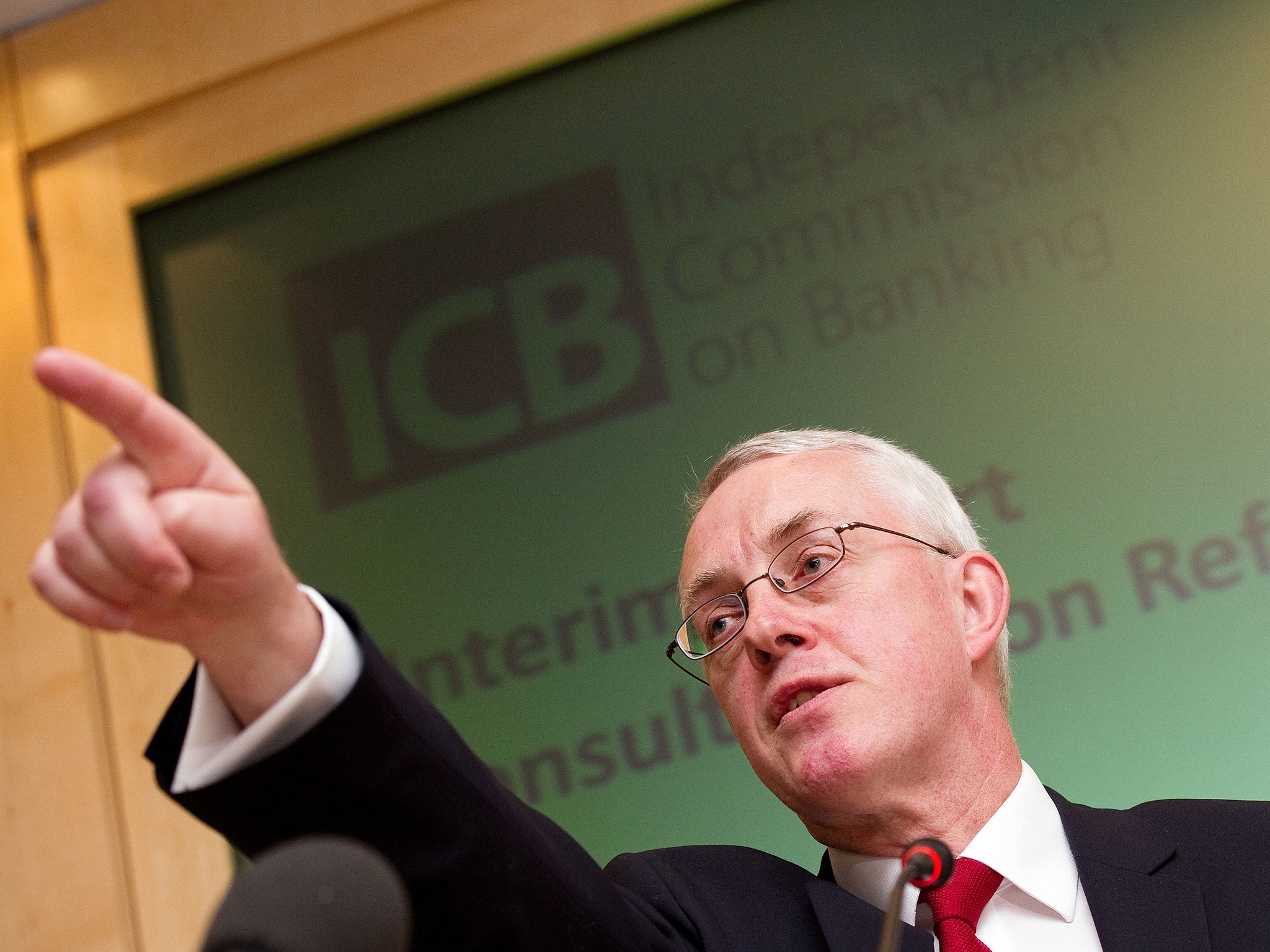Bank of England still leaving UK lenders dangerously undercapitalised, says ex-financial reform boss
The Bank’s Governor, Mark Carney, has boasted that UK banks have been forced to triple their capital buffers since 2007 but Sir John Vickers insists that Threadneedle Street's cost-benefit approach is fatally flawed

The man who led the UK’s post-financial crisis banking reform drive says that UK lenders, ten years after the crash, are still not safe enough.
Sir John Vickers, who chaired the Independent Commission on Banking which reported in 2011, says the Bank of England is still being too lax on banks’ capital requirements, making lenders overly fragile in the event of another crisis.
“The politics of regulatory reform has resulted in a settlement that falls short of what the economics require,” he said in a speech in Abu Dhabi.
The Bank’s Governor, Mark Carney, has boasted in recent months that UK banks have been forced to triple their capital buffers – shareholders’ funds which absorb losses in a crisis – since 2007 and that there is a new resolution regime in place which means they can be wound down with minimum disruption if they fail.
Earlier this week the Bank of England concluded in its latest stress test of the sector this week that the system is adequately capitalised to withstand not just a disorderly Brexit but a simultaneous global downturn.
But Sir John said that the Bank’s cost-benefit approach to analysing how much equity should underpin lenders’ balance sheets, outlined in a 2015 paper, is fatally flawed since if calibrates the optimum capital buffers at an average point in the credit cycle.
“Capital buffers are a safeguard for abnormal conditions, just as flood defences are built for abnormal weather conditions,” he said.
“The BoE [Bank of England]…appeals to countercyclical capital policy, but there are no grounds to suppose that such policy could or would anticipate all elevations of risk in a timely and sufficient manner. The premise of normal risk conditions is simply the wrong basis for the analysis.”
“Correcting for this implausible assumption, and taking a less rosy view of the efficacy of resolution arrangements, the BoE model would deliver a very different result – optimal capital levels almost twice the BoE paper’s estimate.”
He also warns that the Bank’s analysis does not adequately take into the possible impact of another global financial crisis and potentially large spillovers.
Sir John, who is now Warden of All Souls College Oxford and is a former chief economist at the Bank of England, has clashed with the Bank repeatedly in recent years.
The Bank has claimed that it has delivered the capital recommendations of his official 2011 report, but Sir John claims that the Bank is undershooting what the committee demanded.
The Bank’s Financial Stability Report on Thursday reported that UK banks in aggregate have a leverage ratio of 5.5 per cent of total assets – which effectively means that if the value of their assets fell just 5.5 per cent in a new crisis they would be bust.
Many financial economists, including the former Bank Governor Lord King, have suggested that the required buffers should be at least 10 per cent of assets.
Subscribe to Independent Premium to bookmark this article
Want to bookmark your favourite articles and stories to read or reference later? Start your Independent Premium subscription today.

Join our commenting forum
Join thought-provoking conversations, follow other Independent readers and see their replies